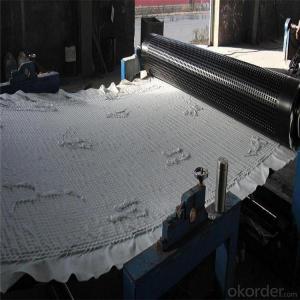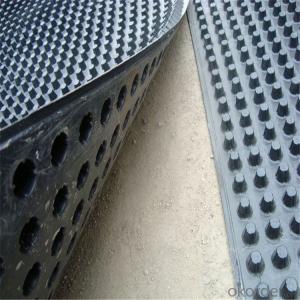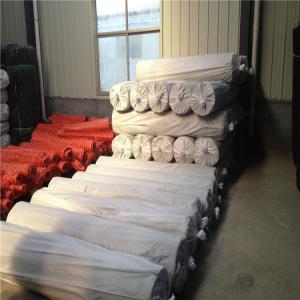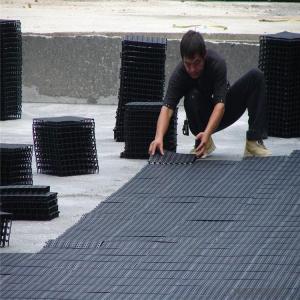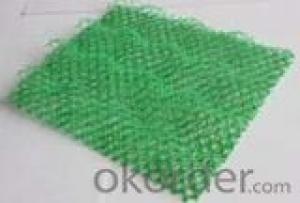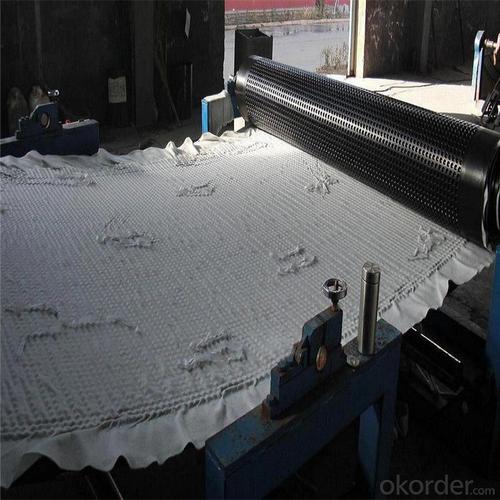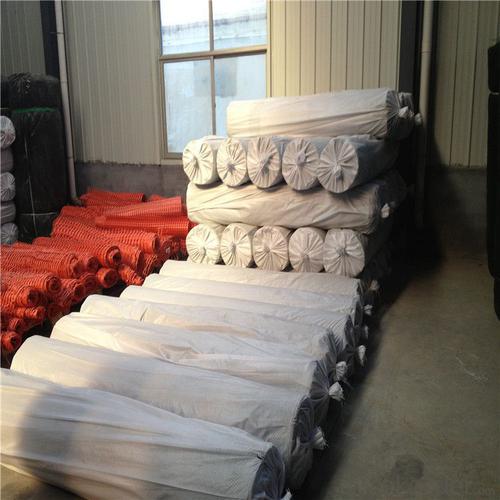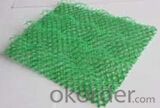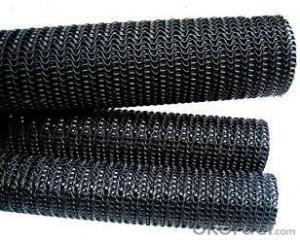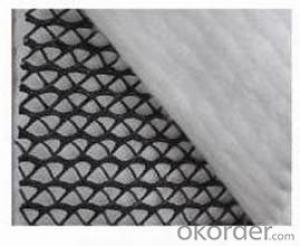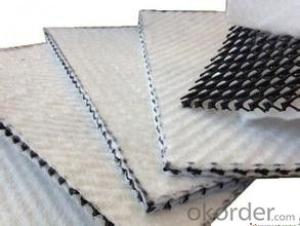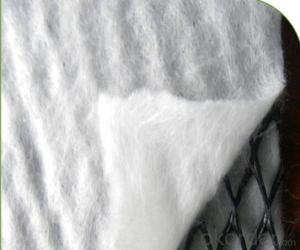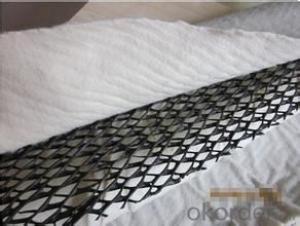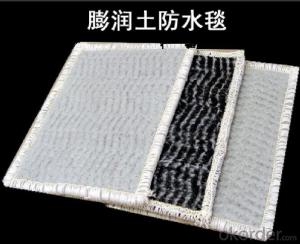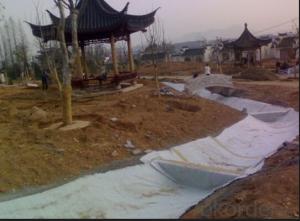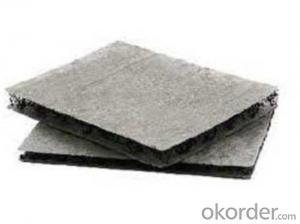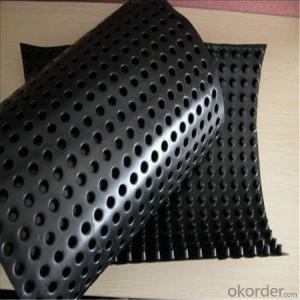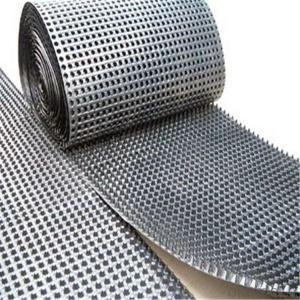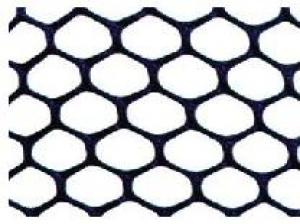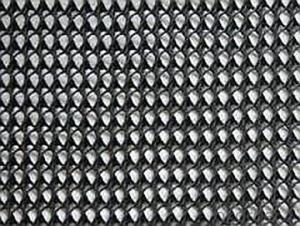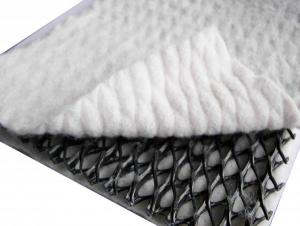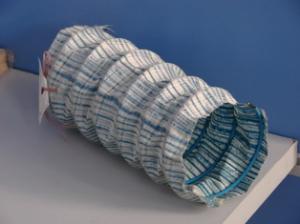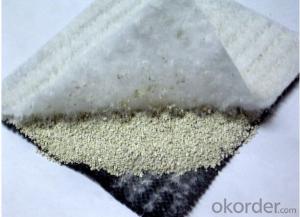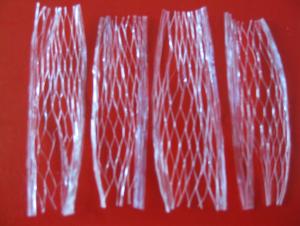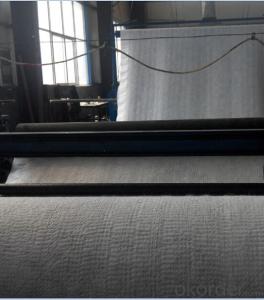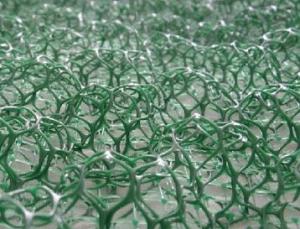Geonet with Ultravioresistant Manufacturer
- Loading Port:
- Qingdao
- Payment Terms:
- TT OR LC
- Min Order Qty:
- 1000 g/m²
- Supply Capability:
- 100000 g/m²/month
OKorder Service Pledge
OKorder Financial Service
You Might Also Like
Product Specification---3D Geomat
Introduction:
It is a kind of new 3D structural geosynthetics , which is applied in water and soil conservation
Features: Preventing soil erosion, increasing the greening area and improving the ecological environment
Function:
1.Before the greensward grows, it prevents the surface
of the land from the erosion of the wind and rain.
2 .Form compound protection layer with the plant ,
standing the wash-out of the high water level and large speed current.
3.Replace the concrete, asphalt, and block, using in the slope surface protection of roadway, railway, river-way, dyke, and the hillside, etc.
Properties of 3D Geomat ( three dimensional erosion control mat):
Spec Item | EM2 | EM3 | EM4 | EM5 |
Mass per unit area(g/㎡)≥ | 220 | 260 | 350 | 430 |
Thickness(mm)≥ | 10 | 12 | 14 | 16 |
Width(m)≥ | 2 | |||
Length(m)≥ | 30 | |||
Longitudinal tensile strength(KN/m)≥ | 0.8 | 1.4 | 2.0 | 3.2 |
Transverse tensile strength(KN/m)≥ | 0.8 | 1.4 | 2.0 | 3.2 |
Note: The special spec or size can be manufactured according to the demands of the contract | ||||
Properties of geonet
Item Spec | CE121 | CE131 | CE151 | CE181 | DN1 | HF10 |
Mass per unit area (g/㎡) | 730±35 | 630±30 | 550±25 | 700±35 | 750±35 | 124±60 |
Mesh size (mm) | (8±1)× (8±1) | (27±2)× (27±2) | (74±5)×(74±5) | (90±10)×(90±10) | (10±1)×(10±1) | (10±1)×(6±1) |
Width(m) | 2 or 2.5 | |||||
Length(m) | 50 or 40 | |||||
Maximum tensile strength (KN/m)≥ | 6.2 | 5.8 | 5.0 | 5.77 | 6.0 | 18 |
Note: The special spec or size can be manufactured according to the demands of the contract
Application:
1. Using the geonet on the roadbed of the roadway and railway can distribute the load effectively, improve the loading capacity and the stability of the roadway, and prolong its service life.
2. Spreading the geonet on the slope of road can prevent landslides, conserve water and soil, beautify the environment.
3. Spreading the geonet in the dyke protection in the reservoir and the river can protect it from the landslide.
4. Using the geonet in the coast engineering can amortize the concussion and the erosion of the
Images of Geonet
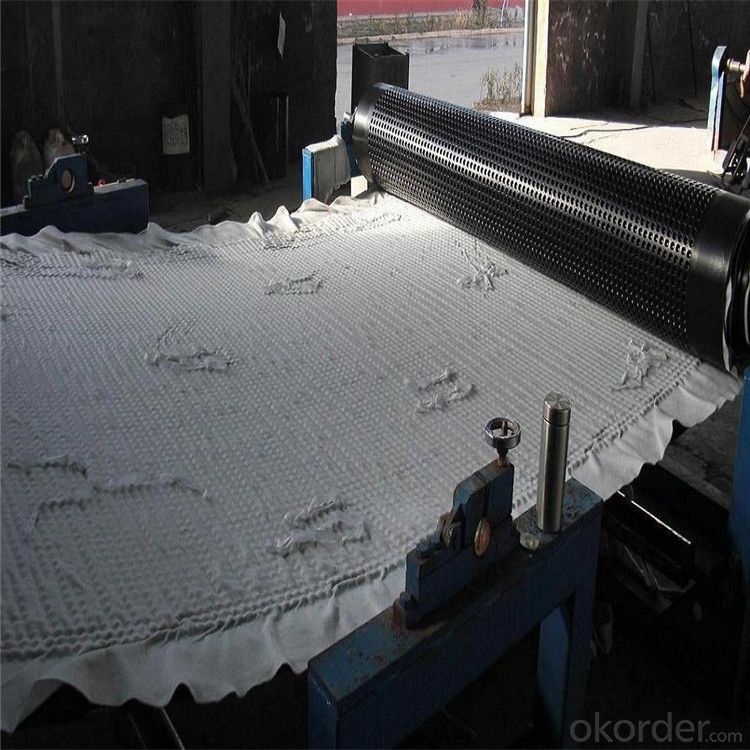
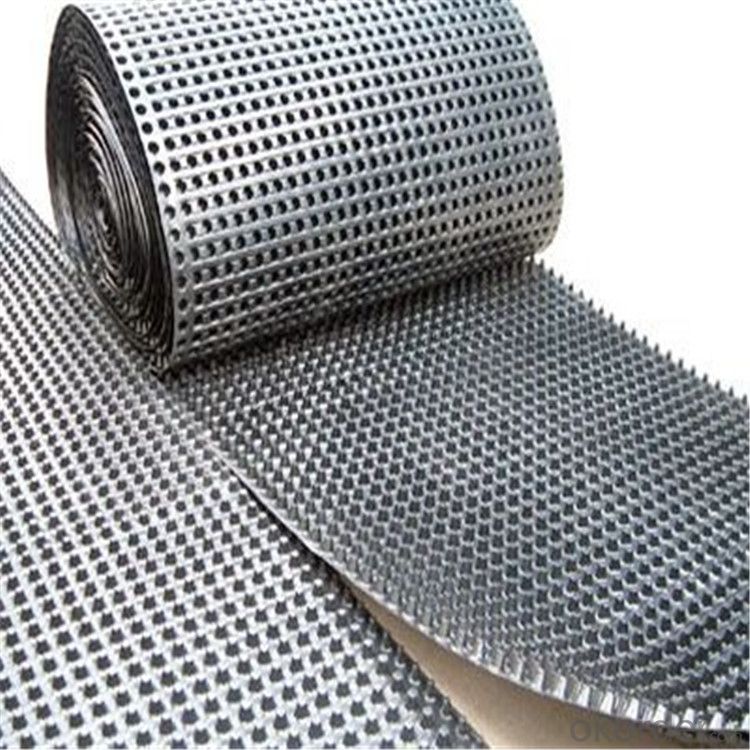
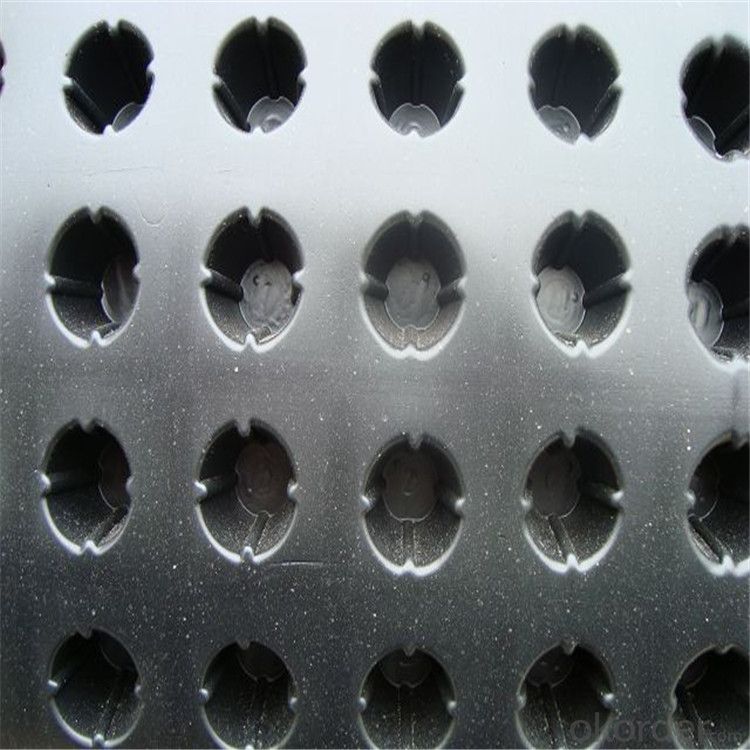
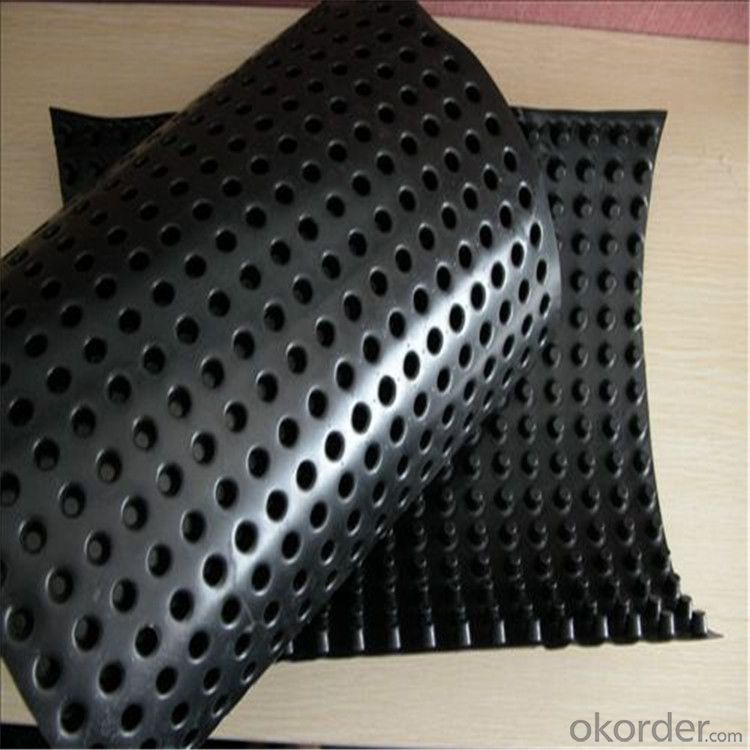
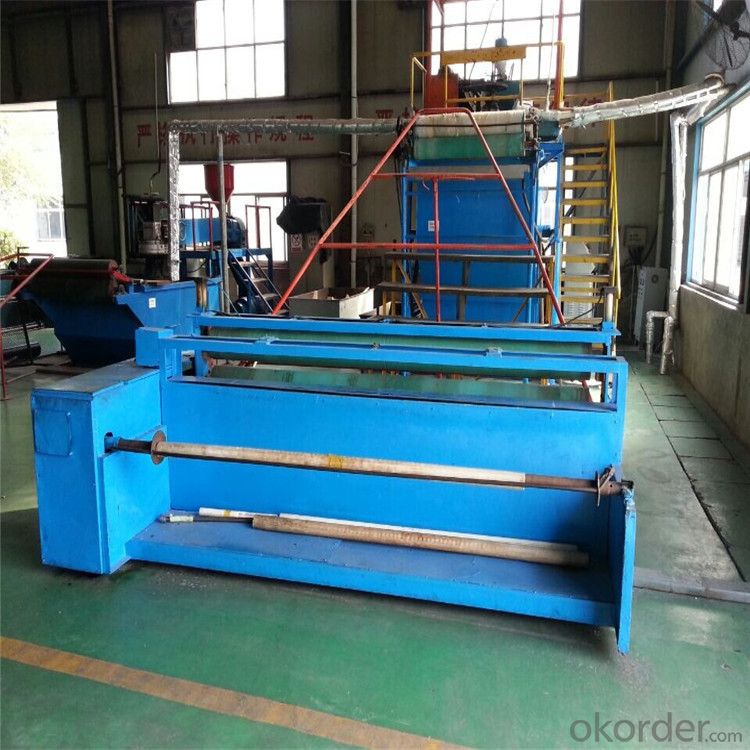
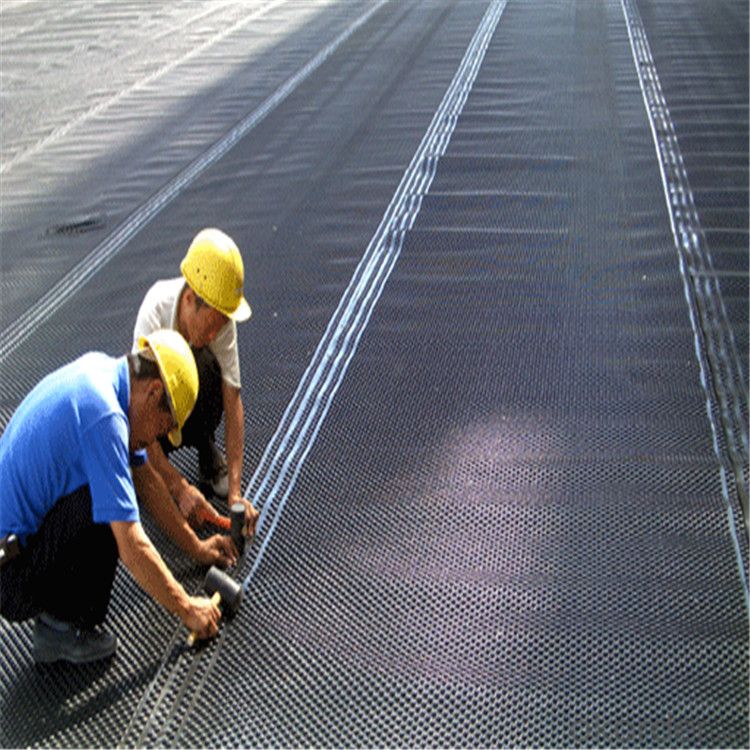
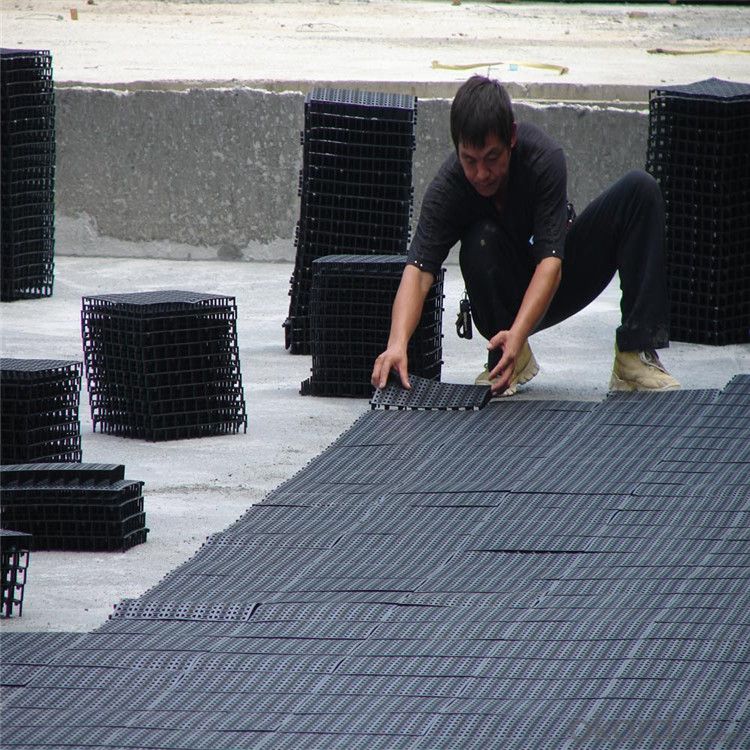
- Q: Can geocells be used for erosion control on slopes?
- Yes, geocells can be used for erosion control on slopes. Geocells are three-dimensional honeycomb-like structures made from high-density polyethylene (HDPE) materials. These cells can be filled with soil, gravel, or other materials to create a stable and reinforced surface. When used on slopes, geocells help to prevent soil erosion by providing confinement and reinforcement, which increases the soil's resistance to erosion caused by water flow or gravity. Geocells are an effective and sustainable solution for erosion control on slopes.
- Q: Are earthwork products suitable for building retaining ponds?
- Yes, earthwork products are suitable for building retaining ponds. Earthwork products such as soil, clay, gravel, and rocks are commonly used to construct retaining ponds. These materials are effective in creating the necessary structural integrity and water containment required for retaining ponds.
- Q: How do geotextile bags compare to other erosion control methods?
- Geotextile bags are a highly effective erosion control method due to their versatility and ease of use. Unlike other methods such as retaining walls or riprap, geotextile bags are lightweight, cost-effective, and can be easily installed in various terrains. They provide excellent sediment retention capabilities and allow for natural vegetation growth, making them an environmentally-friendly choice. Additionally, geotextile bags offer long-term durability and can withstand harsh weather conditions. Overall, geotextile bags are a superior erosion control solution that outperforms many other methods in terms of effectiveness and practicality.
- Q: How are geotubes used in beach erosion control?
- Geotubes are used in beach erosion control by acting as sand-filled containers that are placed along the shoreline to create a barrier against the erosive forces of waves and currents. These large fabric tubes are filled with sand and stacked in a strategic manner to form a protective structure. Geotubes help to stabilize the beach by trapping and retaining sand, preventing erosion and maintaining the coastal profile.
- Q: What are the courses in adult education and construction engineering?
- Self-examination is also adult education, but self-examination course is fixed, but each province may not be the same, do not know which province you are, there is a specialist and undergraduate examination subjects
- Q: Are earthwork products suitable for use in dam construction?
- Yes, earthwork products are suitable for use in dam construction. Earthwork products, such as compacted soil, clay, and rock fill, are commonly used in dam construction to form the structure's foundation and core. These materials provide stability, erosion control, and water retention capabilities, making them essential for building a strong and durable dam. Additionally, earthwork products can be easily sourced in large quantities, making them cost-effective for dam construction projects.
- Q: What are the different types of erosion control blankets available?
- There are several types of erosion control blankets available, including straw blankets, coconut fiber blankets, and synthetic blankets. Straw blankets are made from natural straw fibers and are effective at controlling erosion on slopes and disturbed soil areas. Coconut fiber blankets, also known as coir blankets, are made from coconut husks and provide excellent erosion control in areas with high water flow or steep slopes. Synthetic blankets, made from materials like polypropylene, are durable and long-lasting, making them suitable for areas with heavy rainfall or high foot traffic.
- Q: Can earthwork products be used in foundation construction?
- Yes, earthwork products can be used in foundation construction. These products, such as soil, gravel, and sand, are commonly used in different stages of foundation construction to provide stability, support, and proper drainage.
- Q: How can geosynthetic panels be used in shoreline stabilization?
- Geosynthetic panels can be used in shoreline stabilization by acting as a barrier against erosion. These panels are installed along the shoreline and can help to reduce wave energy, absorb impacts, and prevent soil erosion. They provide stability to the shoreline and protect it from further degradation, ultimately preserving the natural habitat and preventing damage to nearby structures.
- Q: Are earthwork products suitable for use in swimming pool construction?
- Yes, earthwork products can be suitable for use in swimming pool construction. Earthwork products, such as compacted fill materials and engineered soil, can be used to create a stable foundation for the pool. Additionally, these products can be used to shape the terrain around the pool to ensure proper drainage and prevent water accumulation. However, it is important to consult with a professional pool builder or engineer to determine the specific earthwork products and techniques needed for the construction, considering factors such as soil composition, water table, and local building codes.
Send your message to us
Geonet with Ultravioresistant Manufacturer
- Loading Port:
- Qingdao
- Payment Terms:
- TT OR LC
- Min Order Qty:
- 1000 g/m²
- Supply Capability:
- 100000 g/m²/month
OKorder Service Pledge
OKorder Financial Service
Similar products
Hot products
Hot Searches
